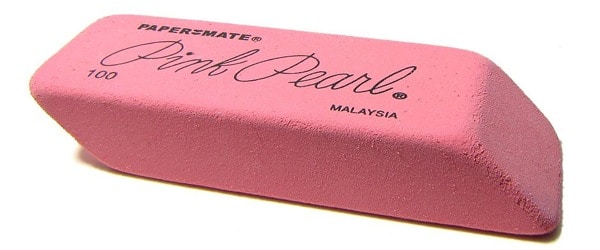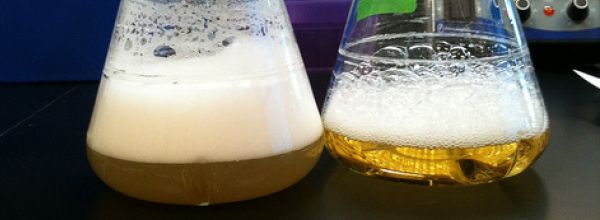PCR is THE technique of modern molecular biology labs.
If you need to copy, sequence, or quantify DNA, you need to know PCR. But how do you get started with PCR?
In short, PCR (polymerase chain reaction) is a biochemical technique that uses thermocycling and enzymes to quickly and reliably copy DNA.
It was invented in a flash of inspiration when scientist Kary Mullis was driving on Highway 128 from San Francisco to Mendocino.
This article gives a brief overview of the PCR process, with a few tips to help you avoid the most common pitfalls.
If you’re new, or relatively new, to PCR then this is for you. (And even if you’re experienced at PCR it’s well worth a read to maybe grab a tip or two!)
Get Started with PCR: 5 Ingredients You Need
1. Polymerase
Polymerases are enzymes that, under the right conditions, can assemble new strands of DNA from template DNA and nucleotides. The original PCR reaction was cumbersome because the high temperatures needed to denature the DNA would kill the polymerases.
This meant that after every heating cycle, new polymerases had to be manually added to the reaction – an expensive endeavor.
However, in modern PCR this is not a problem, as the polymerases usually come from one of two thermophilic bacteria sources:
- Thermus aquaticus; or
- Pyrococcus furiosus.
These polymerases, known as Taq (pronounced “tack”) and Pfu (pronounced “P-F-U”), respectively, can easily withstand the high temperatures associated with a PCR.
Commercial Taq and Pfu polymerases are engineered for speed, fidelity, processivity (the ability to complete long reads), and their ability to read GC-rich templates.
Companies are constantly developing new polymerases. Therefore, don’t settle for “whatever is in your freezer”, but shop around for the best commercial polymerase for your PCR needs.
Talk to your local sales representative too, as they can often give out free polymerase samples, so you can decide what is best for you.
2. Template DNA
This is the DNA that your polymerase will read and copy. Your template DNA can be genomic, plasmid, or cDNA, but whatever your source, quality counts.
The more intact and pure your template DNA, the easier it is to get good PCR results.
Also, keep in mind that the ideal amount of DNA will depend on your source, but it’s usually 1 pg – 1 ng of plasmid DNA or 1 ng – 1 µg of genomic DNA per PCR.
3. Primers
Primers are short fragments of synthesized DNA that bind to your template DNA. You will need to design one “forward” primer and one “reverse” primer.
- Your forward primer designates the start of your PCR. This primer’s sequence is the same as your 5´-3´ template DNA sequence.
- Your reverse primer designates the end of your PCR. This primer’s sequence is the reverse complement of your template DNA.
In general, primers are 18–22 base pairs long. However, more important than their length is their melting temperature.
The melting temperatures of your primers should be 54–60°C and as similar as possible to each other.
There are lots of online calculators that can work out primer annealing temperatures, and most companies that synthesize primers supply such calculators. Read our top tips for primer design here.
4. Nucleotides
As the monomers of DNA, nucleotides are necessary for making DNA copies. For most DNA PCRs you will use deoxynucleoside triphosphates (dNTPs). You can buy these separately or as a dGTP, dCTP, dATP, and dTTP mix.
Whatever you buy though, keep in mind that nucleotides are very sensitive to freeze/thaw cycles. Therefore, it is best to create small aliquots of your dNTPs.
Also, make sure that you store dNTPs properly – do not use a frost-free freezer that goes through automatic defrost cycles.
5. Buffer
Most commercial polymerases come supplied with their ideal buffer. These buffers not only supply the correct pH, but always have additives like magnesium, potassium, or DMSO, which help optimize DNA denaturing, renaturing, and polymerase activity.
Thermocycling
This is where the magic happens. All of the above ingredients are added to a PCR tube and the tube is thermocycled.
To achieve thermocycling when PCR was first invented, individual PCR tubes were manually moved between heated water baths. (And you think your benchwork is tedious!)
But, since the invention of “Mr. Cycle”, the first thermocycling machine, temperature regulation is now done automatically by thermocyclers. The following is a typical PCR thermocycler profile.
1. Initialization
In this step, the reaction is heated to 94–96°C for 30 seconds to several minutes. This step is usually done only once at the very beginning of your PCR reaction.
This step is important for activating hot-start polymerases, if you are using them, and for denaturing your template DNA.
Keep in mind that if your template GC content is high, you may need to perform an extra-long initialization step.
2. Denaturation (Repeated 15–40 Times)
In this step, the reaction is heated to 94–98°C for 15–30 seconds. This step denatures your DNA and primers, which will allow them to anneal to each other in the next step.
3. Annealing (Repeated 15–40 Times)
In this step, your reaction’s temperature is rapidly lowered to 50–64°C for 20–40 seconds.
The temperature in this step needs to be low enough that your denatured primers can form Watson–Crick base pairs with your template DNA, but high enough that only the most stable (perfectly paired) double-stranded DNA structures can form.
Usually, this perfect annealing temperature is a few degrees lower than the melting temperature of your primer pair.
Also during this step, your polymerase will bind to your primer/template DNA complex, although your polymerase will not start reading until the temperature is raised in the next step.
4. Elongation or Extension (Repeated 15–40 Times)
In this step, your reaction is rapidly heated to 72–80°C. This is when your polymerase will begin reading (in the 5´-3´ direction) and copying your template DNA (in the 3´-5´direction).
The higher temperature during this step reduces non-specific primer/template DNA interactions, thus increasing the specificity of your reaction.
However, the exact temperature will be determined by the preference of your polymerase, so read your packaging. The length of this step depends on how long your DNA copy will be.
Typically, DNA polymerase can copy 1000 base pairs per minute. Therefore, you need to allow at least 1 minute of extension time per 1000 bases.
At the end of this incubation, new double-stranded pieces of DNA will have been created, consisting of both template and new DNA.
5. And Repeat…
Steps 2–4 are then repeated 15–40 times.
It is true that the more cycles you program, the more DNA copies you will create. However, there is an upper limit.
At some point available free nucleotides become limiting and prematurely truncated DNA copies can become a problem. So don’t get greedy with your cycling. Less product that is good and clean is preferable to lots of dirty product.
6. Final Elongation
This is an optional but often recommended step in the PCR process. In this step, the reaction is held at 70–74°C for several minutes. (Usually, you will use the same temperature as you used in the Elongation or Extension step.)
This step allows the polymerases to finish reading whatever strand they are currently on. This optional step can help reduce the number of truncated copies in your final product.
7. Final Hold
Your reaction is now complete. Since the entire PCR process can take a few hours, PCRs are often done overnight or when you have otherwise stepped away; it is recommended that you program your thermocycler to hold your PCR product at 4°C until you return.
You can then analyze or use your product, or transfer it to more suitable long-term storage like your refrigerator.
Need help making your PCR fail (a bit) less often? Download our free notorious PCR inhibitors poster and pin it up near your DNA engine. Or download the Bitesize Bio PCR eBook for more comprehensive practical guidance.
And for a more comprehensive guide to PCR, download our free PCR fundamentals eBook and become an expert.
Do you have any top tips for carrying out the perfect PCR? We’d love to hear in the comments.
Originally published January 27, 2014. Reviewed and updated April 2021.







